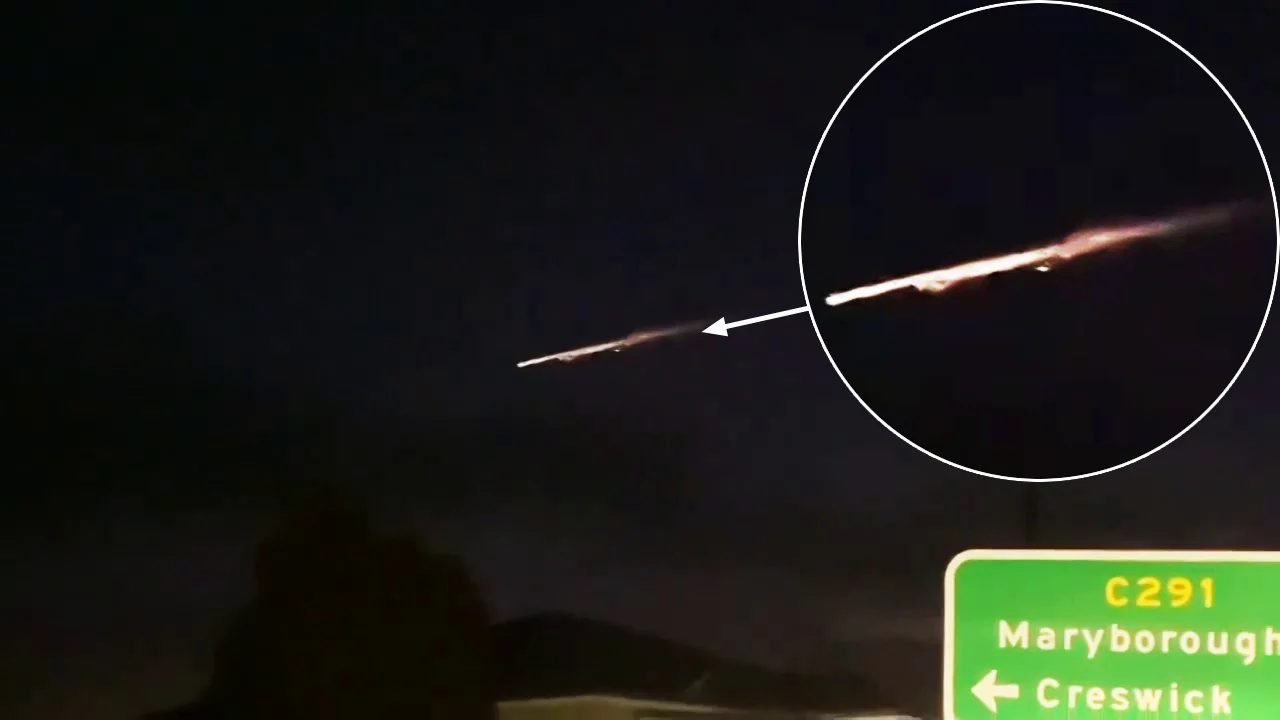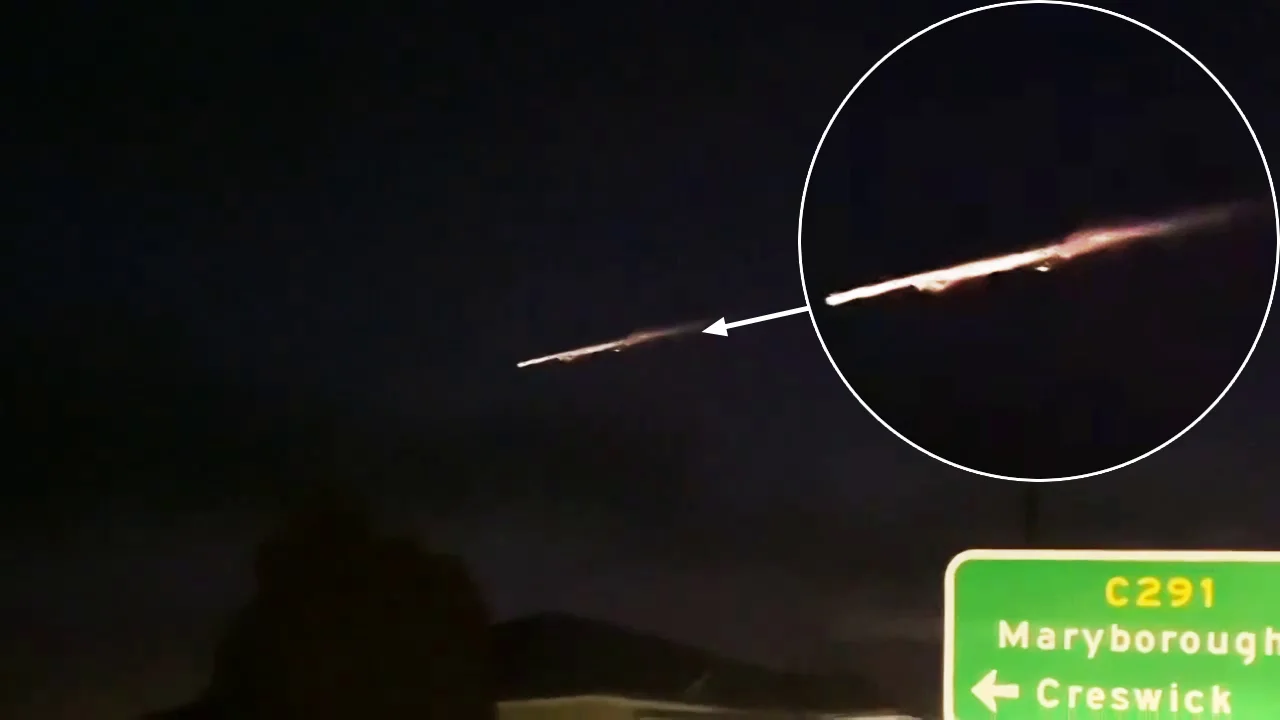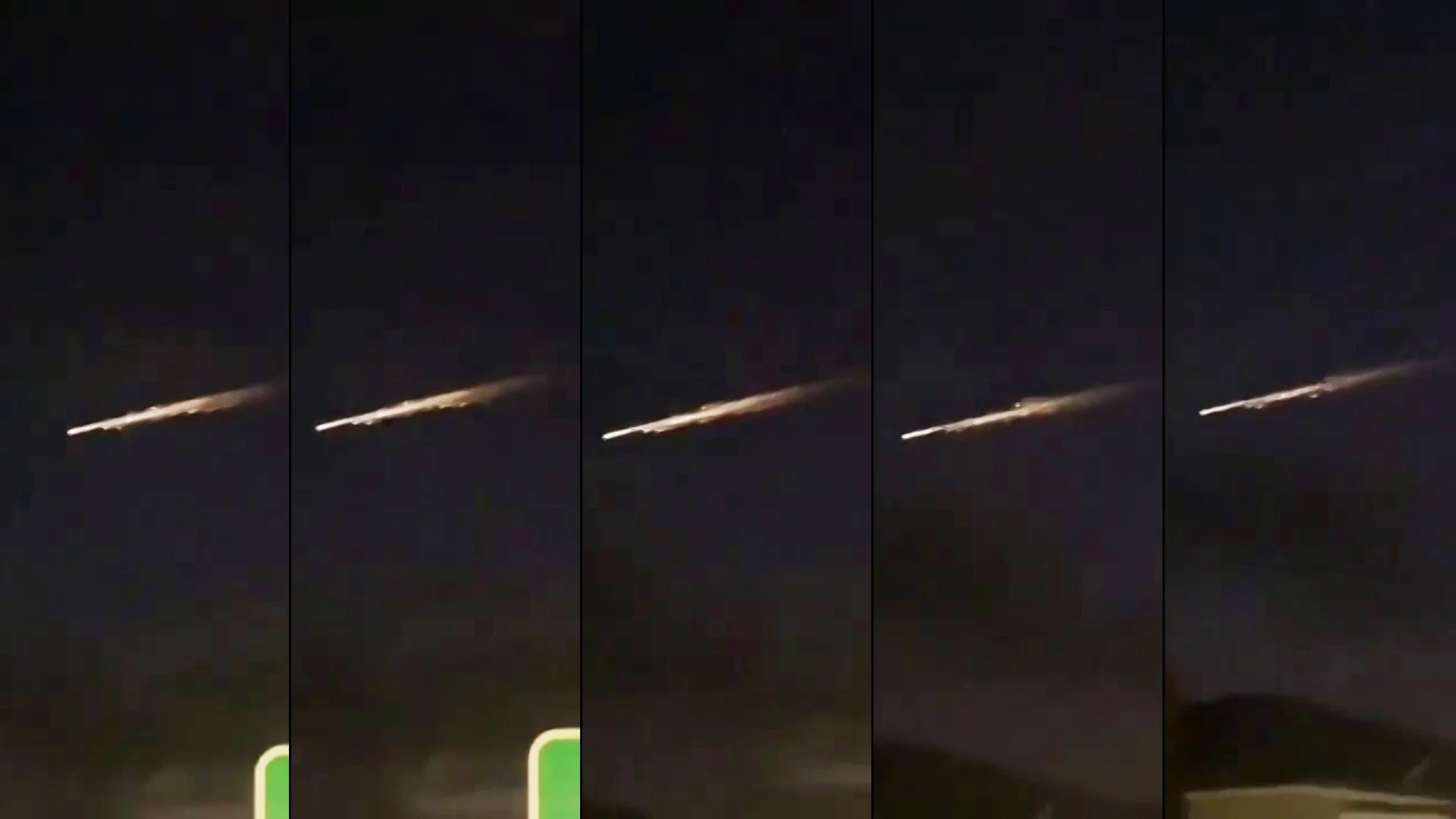
Space junk streaks across Australian skies as a bright, flaming fireball
Witnesses described it as a 'surreal' sight
Residents of southeastern Australia and Tasmania witnessed a fantastic sight in the sky Friday night, as fireball blazed by overhead.
Thomas Toose, a farmer in Creswick, Victoria, northwest of Melbourne, called the sight "surreal" and told Storyful it "was massive and lasted about 20 seconds."
Assumed, at first glance, to be a meteor - the bright light caused by a chunk of rock or ice plunging into the atmosphere after floating through space for billions of years. Instead, though, it turned out to be something with a more mundane, Earthly origin.

A screencap of the video captured by farmer Thomas Toose of the May 22, 2020 fireball over Victoria, Australia. Insert: a close-up, brighter view. Credit: Thomas Toose/Storyful/Reuters
After scrutinizing the video footage of the fireball, skywatchers and scientists alike noted a few details that set this apart from your typical meteor fireball.
First, it was travelling very slowly by comparison. When a meteoroid enters Earth's atmosphere from space, it is typically travelling at speeds of between 11 and 72 kilometres per second (40,000 km/h to 260,000 km/h). So, the meteor produced appears to flash by in only a few seconds. Often, this isn't even enough time to grab your cellphone and record the event. Only cameras that are already running and pointing the right direction - webcams, security cameras and dashboard cameras - tend to capture them.
Second, the colour of the fireball, as well as the obvious disintegration seen from it, would have been fairly unusual for a meteoroid. Meteor fireballs usually flash bright white, with maybe a slight tinge of colour (blue, green, yellow). The exact colour depends on its speed, the atmospheric gases it is compressing, and what kind of minerals or metals might be vaporizing off the meteoroid's surface. In this case, the fireball is glowing orange-white and is trailing visible flames and smoke.

From left to right, the appearance of the fireball changed from beginning to end, with glowing/flaming debris breaking away as it passed through the air. Credit: Thomas Toose/Storyful/Reuters/Scott Sutherland
Some larger space rocks do break apart as they pass through the air. These fragmentations always follow an extremely bright 'bolide' flash from the object, and the smaller fragments quickly wink out. Here, the debris is still visible for some time after breaking away from the object.
"The fact it was slow-moving and at a shallow angle, and an amount of disintegration was occurring, gave it away," Perry Vlahos, vice-president of the Astronomical Society of Victoria, told Guardian Australia. " It was not an alien spacecraft, a meteor or comet."
"It's a late-stage Russian rocket that put up a satellite about 5:30 our time this afternoon," he added. "So that spent rocket stage has re-entered the atmosphere."
Indeed, according to RussianSpaceWeb.com, "Military personnel at Plesetsk Cosmodrome in Northern Russia launched a Soyuz-2 rocket on May 22, 2020, successfully delivering a classified payload which is believed to be the fourth satellite for the nation's newest constellation designed to provide the Kremlin with early warning about launches of ballistic missiles around the world."
Astronomer Jonathan McDowell, from the Harvard-Smithsonian Center for Astrophysics, posted a similar conclusion on Twitter:
This is not the first time rocket debris has fallen or been seen burning over populated areas of the planet.
In March 2015, debris from a Chinese rocket launched in 2014 streaked over Western Canada. In October of 2018, a fuel tank crashed to the ground in a walnut orchard in Hanford, Calif., after a defunct satellite burned up on re-entry.
Earlier this month, on May 11, 2020, one of the largest pieces of space junk to make an uncontrolled re-entry into the atmosphere - the nearly 18-tonne empty core stage of a Chinese Long March-5B rocket - passed over the United States from Los Angeles to New York, before crashing down into the Atlantic Ocean off the west coast of Africa.
In most cases these pieces of space debris completely disintegrate and burn up as they pass through the atmosphere. Larger and more durable pieces, however, can survive all the way to the surface.
Sources: Reuters | Victoria Storm Chasers | AMS Meteors | RussianSpaceWeb











